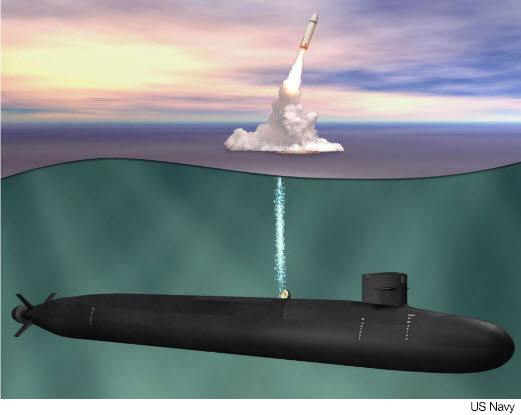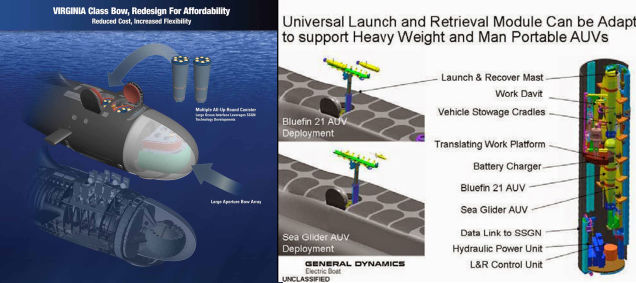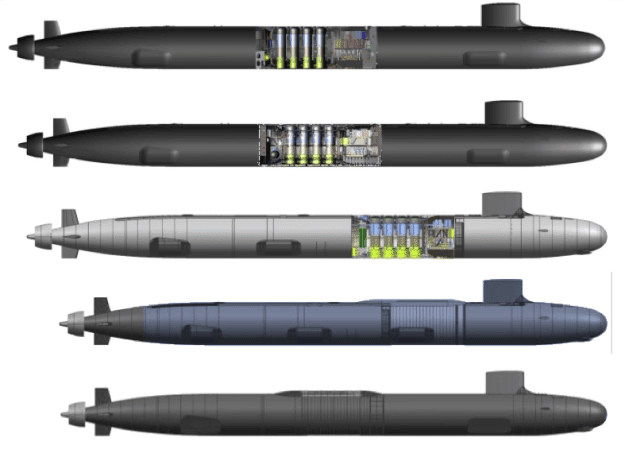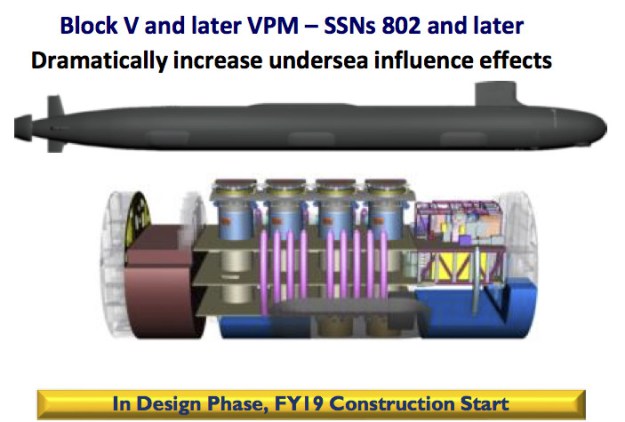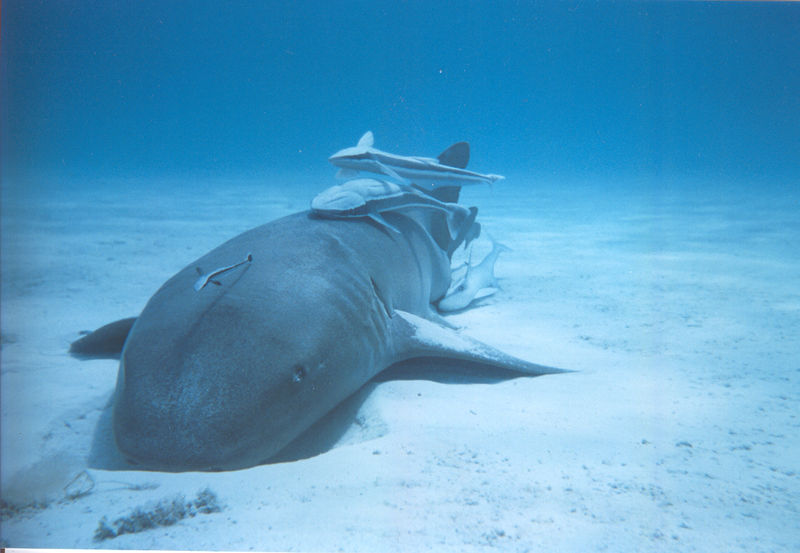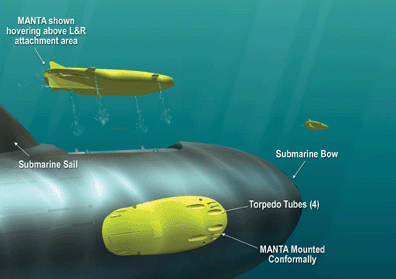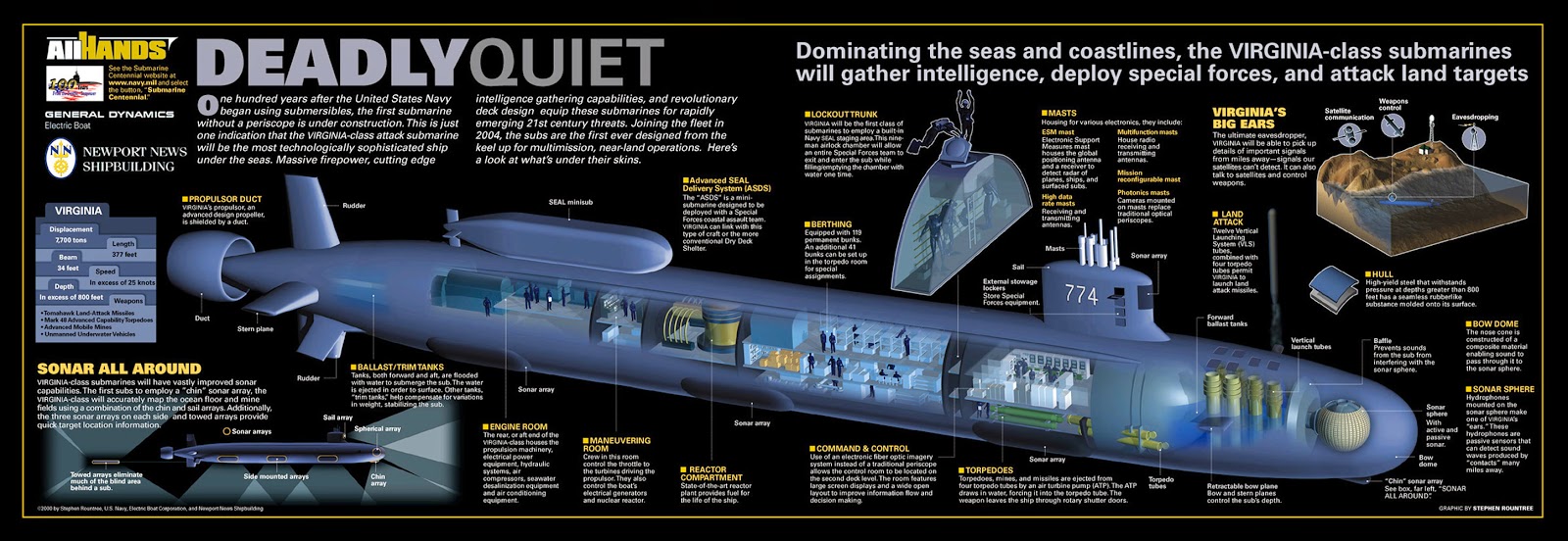 max steel Thu Jul 21, 2016 12:09 pm
max steel Thu Jul 21, 2016 12:09 pm
US Navy Stretches Submarine Fleet in Latest Fleet Plan
The US Navy is stretching the lives of some of its submarines, if only by a year or two.
In the latest version of the 30-year fleet shipbuilding plan, submitted to Congress July 9, the Navy juggled the schedule for ships it plans to dispose of in the next five years. The number of ships planned for inactivation in 2017 dropped from 10 to six, and four submarines gained a modest lease on life.
But overall, the service plans to inactivate a dozen Los Angeles-class attack submarines from 2017 through 2021, reflecting a general decline in the undersea fleet. From today’s 52-ship level, the attack boat fleet drops to 48 boats in 2022 and hits a low of 41 hulls in 2029, afterwards steadily rising to 51 subs in 2046. Those levels are consistent with what the service forecast a year ago.
In the latest iteration of the inactivation plan, two submarines previously scheduled to leave service in 2017 have been extended – the Jacksonville to 2018, and the Bremerton to 2019. Two submarines planned to leave the fleet in 2019 have also been stretched out – the Louisville to 2020, and the Providence to 2021.
Three submarines are leaving the fleet this year -- the City of Corpus Christi, Albuquerque, and Houston.
Three more are still scheduled to leave active service in 2017 – the Dallas and Buffalo will, like the other submarines, eventually be dismantled, while the San Francisco will be modified and converted to become a Moored Training Ship at the Navy’s nuclear power training school in Goose Creek, South Carolina.
According to the latest plan, three submarines – the Olympia, Louisville and Helena – will inactivate in 2020, while three more – Providence, Olympia and San Juan – will go in 2021. The San Juan will be the first of an improved Los Angeles-class variant to leave the fleet.
The Navy frequently adjusts inactivation dates based on a variety of factors, including operational need and budgetary constraints and, in the case of nuclear-powered ships, the amount of fuel remaining in the reactors. The four submarines being extended give back about six years of operating time, allowing for the possibility that at least one additional deployment could be gained from each extension.
Another ship that was to have left the fleet in 2017, the Afloat Forward Staging Base Ponce, has been extended to 2018. The Ponce has proven useful operating with the Fifth Fleet from Bahrain but, having been in service since 1971, is wearing out. She will be replaced by new ESB Expeditionary Sea Base ships.
Still on the inactivation list for 2020 are the cruisers Bunker Hill and Mobile Bay, which will become the first Ticonderoga-class cruisers equipped with vertical launch systems to decommission. Their inactivation will reduce the number of cruisers in service from 22 to 20, although those numbers are offset by an increasing number of Flight IIA Arleigh Burke-class destroyers, along with new Flight III destroyers equipped with the Air Missile Defense Radar (AMDR).
Both the Bunker Hill and Mobile Bay were upgraded by the first cruiser modernization program applied to 11 ships. The first pair of the remaining eleven, Cowpens and Gettysburg, began their upgrades in 2016. The Navy plans to replace the first 11 ships with the second group in the air defense commander role to protect deployed aircraft carriers.
The 2017 shipbuilding budget, which includes the Future Years Defense Plan (FYDP) into 2021, was submitted to Congress in February, and the latest 30-year plan reflects those numbers, along with the Navy’s admission that the shipbuilding plan provides fewer ships than needed. The plan continues with the goal of a 308-ship fleet, even as the Navy is re-evaluating the Force Structure Assessment (FSA) that determined that goal.
Along with a new fleet architecture study, a revised FSA is expected to be reflected in the fiscal 2018 budget to be submitted in early 2017. Service officials have stated they expect the 308-ship number to go up in the new assessment – and they continue to advocate the need for greater funding levels to maintain the fleet, which sits today at 276 ships.
“The shipbuilding plan described in this report achieves the shipbuilding plan objective of 308 battle force ships from FY2021 through FY2028,” the Navy said in the report, “albeit not with the FSA required mix of ships. The rate of large and small surface combatant and [submarine] retirements beyond FY2028 exceeds the ability of the Navy to finance a build rate that sustains the 308-ship force structure.”
The Navy expects its Battle Force Inventory to total 287 ships in 2017, rising to a peak of 313 in 2025. After that, the fleet shrinks again, dropping below 300 in 2031 and holding in the 290s through 2046, the extent of the latest 30-year plan.
As a result of the inactivations, the Navy will see a rise in the number of ships it needs to dispose of. Three disposal methods are generally used with ships no longer required or at the end of their service lives: foreign military sale (FMS); sinking in a target or weapons exercise (SINKEX); or dismantlement, also referred to as scrapping or recycling. Ships can also be donated or transferred for use as museums or memorials.
No FMS candidates are listed in the latest fleet plan, a reflection of the lack of suitable types of ships. The US does not transfer nuclear-powered ships, and with the decommissioning in 2015 of the last of the Oliver Hazard Perry-class frigates no new ships have appeared on the FMS list.
But the number of ships that will need to be scrapped jumped from 18 in 2016 to 25 in 2017, boosted by several FMS frigates no one wanted. Two aircraft carriers, the Independence and Kitty Hawk, remain on the recycling list, joined by the former display ship Barry, a decommissioned destroyer that was open to visitors at the Washington Navy Yard for 31 years prior to closing in the fall of 2015.
The SINKEX fleet grew from five ships last year to seven ships available in 2017, including four frigates, the landing ship tank Racine and two attack cargo ships.
The Navy plans to retire a total of 28 battle force ships from 2017 through 2021.





